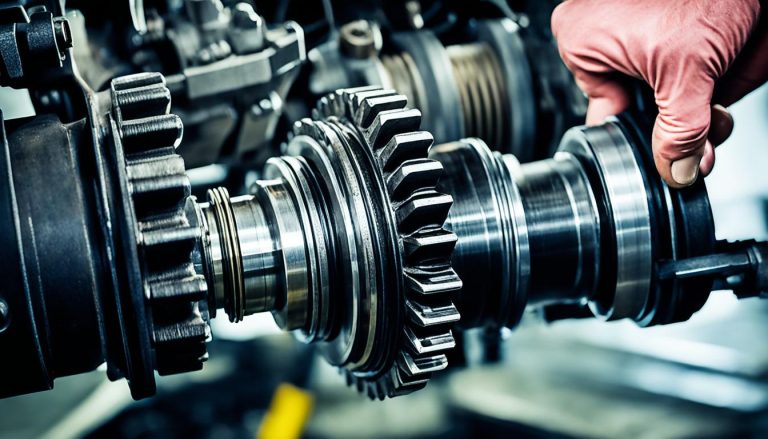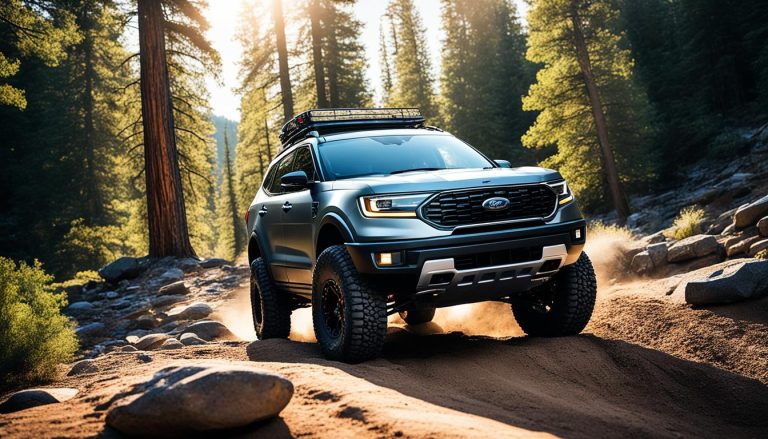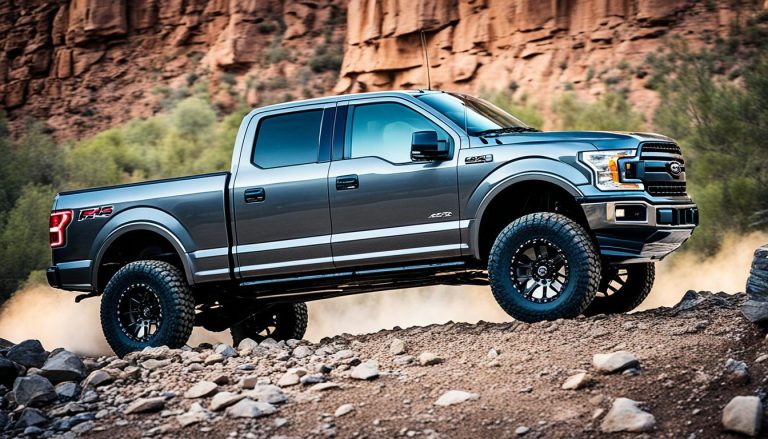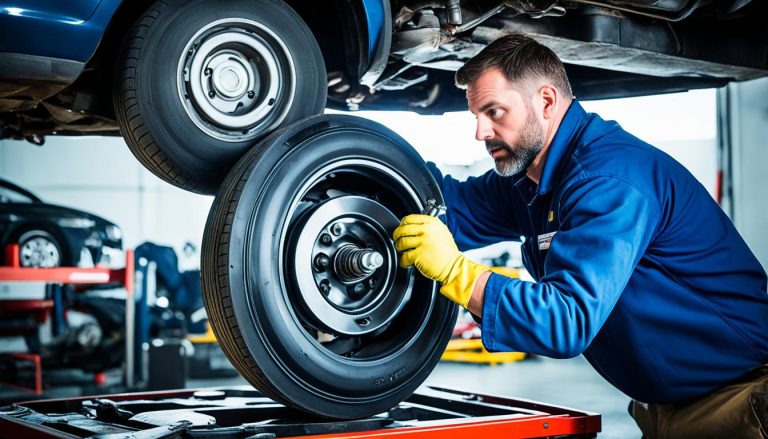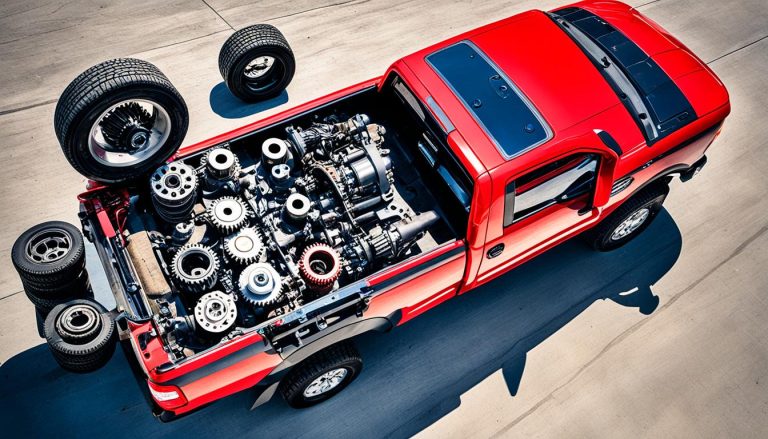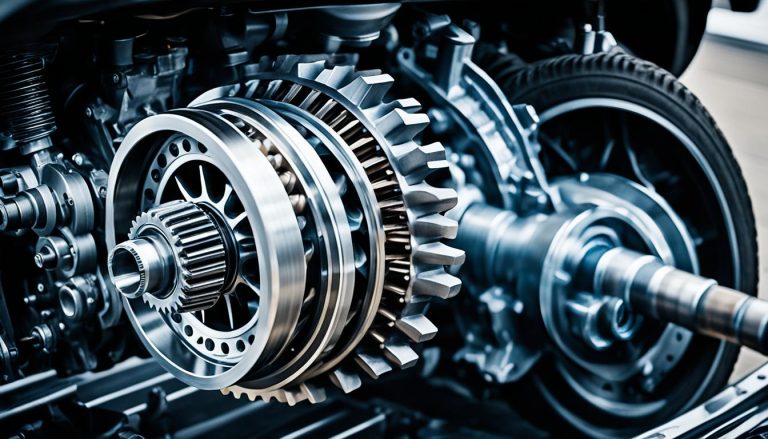Mustang Boss 302: Solving Limited Slip Differential Issues
As a proud owner of the iconic Mustang Boss 302, you understand the importance of peak performance. But what do you do when you face limited slip differential problems that could potentially undercut your ride’s power and agility? Fret not. In this comprehensive troubleshooting guide, we’ll dive into the nitty-gritty of maintenance and repairs to ensure your Mustang Boss 302 remains the performance powerhouse it’s meant to be.
Whether it’s that spine-tingling whine, a hesitance in handling, or an unpredictability in power delivery, limited slip differential woes can be multifaceted. Having a trusted guide can be the difference between temporary fixes and long-term solutions, and that’s what you’ll find here: a resource tailored to preserving the Boss 302’s legendary performance.
With practical insights and step-by-step advice, you’ll be equipped to diagnose and rectify the snags in your Mustang’s driving dynamics. So fasten your seatbelt, because we’re about to help you tackle and triumph over those differential dilemmas.
Key Takeaways
- Understand the types of limited slip differential issues that may arise in your Mustang Boss 302.
- Learn the significance of proper maintenance routines to prevent performance hiccups.
- Identify common symptoms and noises indicating a differential problem.
- Discover the value of selecting the right differential parts in repairs and upgrades.
- Gain insights on how diverse weather conditions can affect your Mustang’s differential performance.
- Develop the confidence to decide between DIY solutions and when to seek professional repairs.
Understanding the Limited Slip Differential in the Mustang Boss 302
When you’re behind the wheel of a Mustang Boss 302, its capabilities to manage traction and power distribution are paramount in offering you that exhilarating performance driving experience. Integral to this is the car’s limited slip differential (LSD), a critical component that avid drivers need to comprehend fully. Let’s delve into how the Mustang Boss 302’s LSD enhances your driving, particularly focusing on the Torsen differential, its comparison with traditional traction lock differentials, and the important role of bias ratio.
The Role of the Torsen Differential in Performance Driving
Performance driving demands a differential that can cope with the rigors of hard cornering. The Torsen differential within your Mustang Boss 302 excels in maintaining power distribution through high-speed bends, ensuring that torque is intelligently apportioned to the wheel with the most grip. This differential thrives on handling side slip, which can be a common occurrence during performance driving on road tracks.
Comparing Torsen to Traditional Traction Lock Differentials
While the Torsen differential is a marvel on the course, understanding its contrast with the traction lock differential is crucial for enthusiasts. A conventional traction lock differential, often found in performance cars aimed at drag racing, prioritizes distributing torque evenly to both wheels. This setup supports better straight-line acceleration, making it the differential of choice for those looking to dominate the quarter-mile.
Effects of the Bias Ratio on Power Distribution
Bias ratio is not a mere technical detail; it’s the defining factor that sways how power is shared between wheels. Differentials with a higher bias ratio, such as the famed FR500S T2-R variant, cater to those Mustang Boss 302 drivers aiming to conquer serpentine tarmac with superior cornering ability. However, a high bias ratio may not be conducive to the explosive, linear speed needed in drag racing—where a balance must be struck to match the specific performance criteria.
| Feature | Torsen Differential | Traction Lock Differential |
|---|---|---|
| Best Use Scenario | Road Racing | Drag Racing |
| Power Management | Variable, depends on grip | Even Torque Distribution |
| Bias Ratio | High | Lower |
| Cornering | Enhanced | Standard |
| Acceleration Type | Corner Exit | Straight Line |
Matching the right LSD to your Mustang Boss 302 is vital for ensuring the car’s performance is in lockstep with your driving demands. Whether you’re aiming to clip every apex on the track with precision or leave competitors in your dust in a straight line, the right differential setup is key.
Limited Slip Differential Problems for Mustang Boss 302
As an enthusiast of the powerful Mustang Boss 302, understanding the nuances of your car’s limited slip differential (LSD) is crucial, especially when encountering common issues that may affect its performance. Varying weather conditions can reveal potential LSD failures that you’ll want to rectify to maintain the performance legacy of your Boss 302.
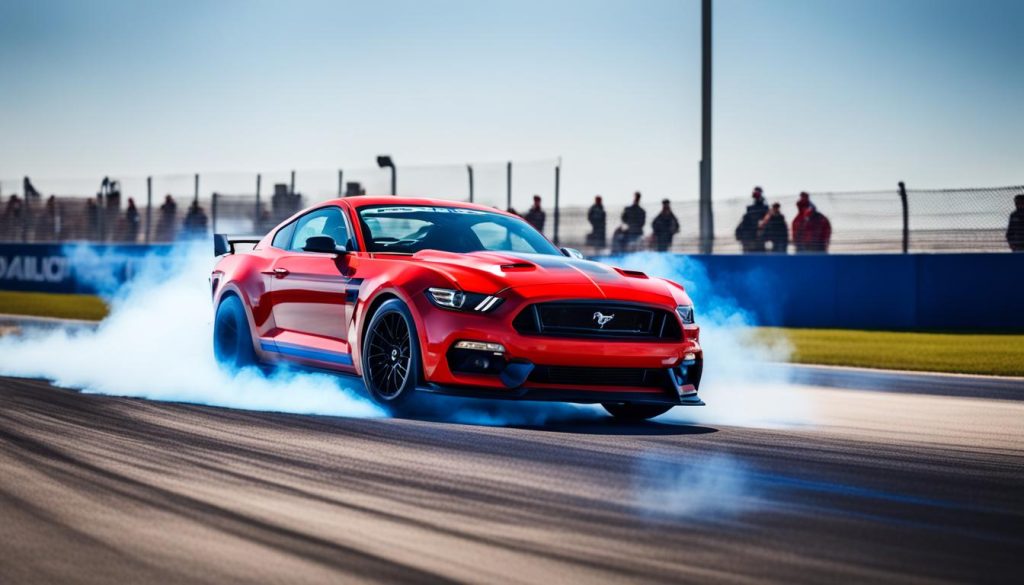
Identifying Common Symptoms of L.S.D. Failures
Being proactive about limited slip differential problems begins with recognizing the common symptoms. Owners might notice an unwelcome grinding noise or a feeling of hesitation during turns. Additionally, if you’re experiencing a lack of traction while accelerating, especially on a curve, this could be indicative of an LSD issue. A thorough inspection may reveal worn clutches or springs within the differential—a clear call to action.
The Impact of Weather Conditions on Differential Performance
The Mustang Boss 302, equipped with a Torsen differential, thrives under normal driving conditions, where it can expertly transfer torque to the gripping wheel. However, slippery surfaces like snow or ice may diminish its effectiveness, potentially leading to traction loss. Conversely, the traction lock differential, while not as nuanced in torque transfer, could provide more predictable straight-line traction regardless of weather.
By paying attention to how your Mustang Boss 302’s differential responds to these conditions, you can be more equipped to address any limited slip differential problems, ensuring your muscle car performs at its peak regardless of the weather thrown its way.
Diagnosing Your Mustang’s Differential: Recognizing the Signs
As the proud owner of a Mustang Boss 302, your vehicle’s performance is paramount. Knowing how to diagnose differential problems can save you from costly repairs and keep your Mustang running smoothly. Let’s tune in to the signs and understand what your car’s sounds and behaviors are indicating.
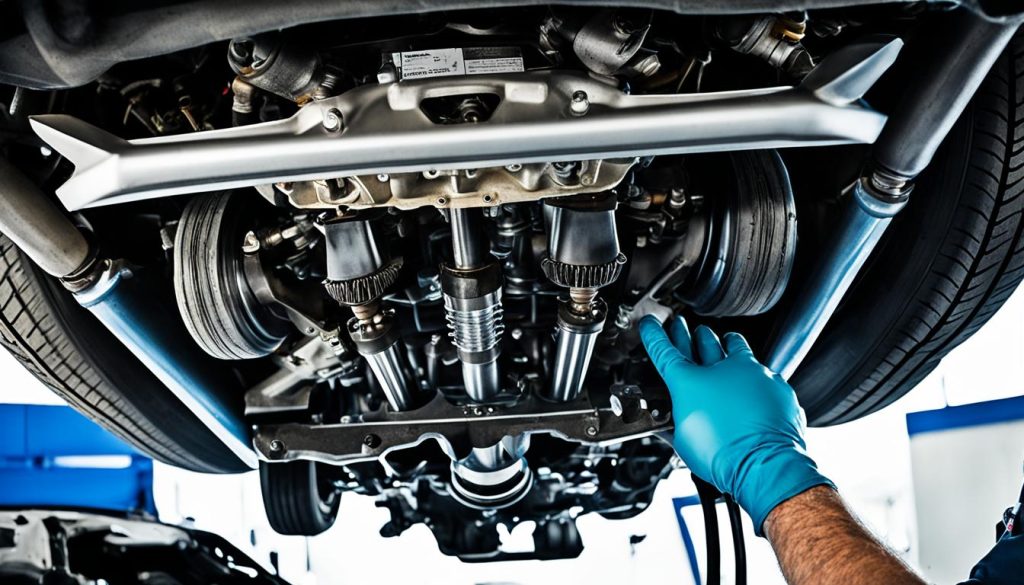
Whining Noises and Their Implications
When diagnosing Mustang differential issues, your attention to auditory cues is essential. A common complaint among Mustang Boss 302 owners is the presence of whining noises, which can be symptomatic of several issues. These noises are often linked to incorrect gear lash settings or worn bearings, and they can manifest with the clutch either engaged or disengaged. If you hear an unusual whine, it’s worth investigating to prevent further damage.
Performance Variation at Different Speeds
Another key sign to watch for is performance variation at different speeds. Some drivers report a reduction in whining noise at higher speeds, while others notice noise peaks during sustained highway cruising. These performance variations can provide critical clues to the health of your differential. By staying alert to changes in your Mustang’s behavior across varying speeds, you can intercept issues early, ensuring sustained peak performance and diligent maintenance of your cherished vehicle.
Essential Maintenance to Prevent L.S.D. Issues
Keeping your Mustang Boss 302 performing at its peak requires attention to its limited slip differential maintenance. Not only does routine care ensure long-term reliability, but it also prevents the common issues that can arise from neglect. Proper care includes periodic inspections, fluid changes, and the occasional addition of special additives to preserve the intricate workings of your L.S.D. Let’s dive into the specifics to help you maintain the thrills on the road and track.
Routine Checks and Fluid Changes
You know the thrill of driving a Mustang Boss 302, but do you know the satisfaction of keeping it in top condition? Regular checks and differential fluid changes are your best defense against wear and tear. Much like changing the engine oil, refreshing the differential fluid is a critical service point that can’t be skipped. By adhering to a scheduled maintenance plan, you’re not only preserving its performance but also safeguarding your investment.
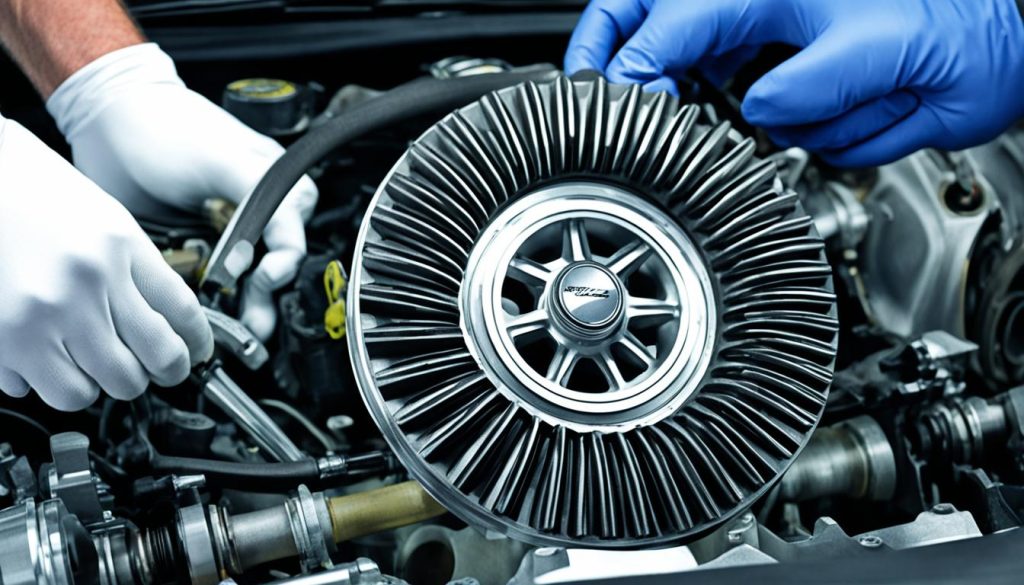
Consistency is key when it comes to routine checks. You’ll want to listen for any abnormal noises and check for leaks, which can be early indicators of a potential issue. Fluid changes, on the other hand, play a pivotal role in maintaining the proper function of your vehicle’s limited slip differential, hence, ensuring the Mustang Boss 302’s reliability.
The Importance of Using the Right Friction Modifier
It’s not just any fluid that keeps the gears turning smoothly in a limited slip differential; the magic ingredient is the right friction modifier. This special additive is designed to reduce chatter and ensure the clutch plates in the differential engage and disengage properly. Without it, you might find your L.S.D. more limited than slip. Stick to the recommended friction modifiers and differential fluid specific to your Mustang’s Torsen differential to maintain optimal performance and prolong its lifespan.
| Maintenance Task | Frequency | Benefits |
|---|---|---|
| Visual Inspection | Every 5,000 miles | Early identification of leaks or wear |
| Fluid Quality Check | Every 10,000 miles | Ensures fluid integrity and differential functionality |
| Differential Fluid Change | Every 30,000 miles | Prevents mechanical wear and overheating |
| Addition of Friction Modifier | With every fluid change | Reduces clutch plate chatter and improves L.S.D. performance |
Maintaining your Mustang Boss 302’s limited slip differential is a straightforward affair when you stay on top of these essential tasks. Ensure these key routines are part of your vehicle’s service regimen, and your Boss 302 will thank you with reliable and exhilarating performance, every time you hit the road.
Repairing the Limited Slip Differential: Step-by-Step Solutions
When you’re considering the health of your Mustang Boss 302’s limited slip differential, it’s essential to decide whether you’re up for the challenge of DIY repairs or if you should seek professional differential repairs. Both paths have their advantages, depending on your skill level, the severity of the issue, and the performance enhancements you desire. Below, let’s explore your options.
Choosing Between DIY and Professional Repairs
If you’re hands-on and have a well-equipped garage, DIY repairs can be a fulfilling endeavor. Not only could you save on labor costs, but you also gain intimate knowledge of your vehicle’s inner workings. However, for complex issues or lack of time, enlisting the expertise of a professional might be the best choice to ensure your Mustang Boss 302’s performance isn’t compromised.
Options for Upgrading the Differential Assembly
Should you decide to enhance the performance of your vehicle, upgrading the differential assembly could be the next step. You could opt for differential upgrades like improved springs and clutches or invest in a complete differential assembly designed for heightened performance. Considering the Mustang Boss 302’s capabilities can help guide your decision-making process.
| Upgrade Option | Benefits | DIY Friendly? | Best For |
|---|---|---|---|
| Improved Clutches and Springs | Better traction and durability | Yes, for experienced DIYers | Daily driving and occasional track use |
| Complete Differential Assembly | End-to-end performance reliability | No, professional installation recommended | Regular track performance enthusiasts |
| Electronic Lockers | Switchable performance mode | Varies by product, some may be DIY-friendly | Versatile driving conditions and customization |
| Traditional Gear Swap | Customized power distribution | Yes, with proper tools and expertise | Drag racing and specific performance tuning |
Ultimately, whether you choose DIY repairs or professional assistance, the goal is to ensure your Mustang Boss 302 continues to deliver the thrilling performance it’s known for. Consider the time, cost, and your personal comfort with mechanical work before diving into repairing limited slip differential issues or performing Mustang Boss 302 enhancements.
Navigating Aftermarket Upgrades for Enhanced Performance
When you’re looking to take your Mustang Boss 302 to the next level, delving into the world of aftermarket upgrades can present a path to significant performance enhancement. Whether your focus is on drag racing, road racing, or just an overall zestier driving experience, exploring the options of electronic lockers and gear swaps could provide that extra edge you’re seeking.
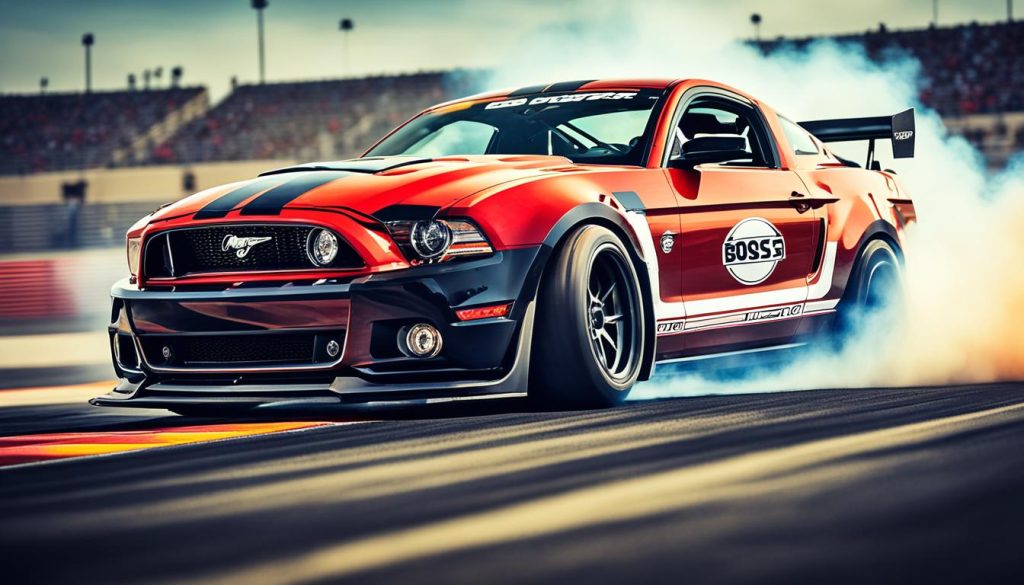
Electronic Lockers: Are They Suitable for Your Boss 302?
Electronic lockers have been gaining traction as a sought-after modification for the Mustang Boss 302, offering the versatility to switch between an open differential and full lock with the flip of a switch. This feature can be especially beneficial in situations where traction conditions change rapidly, making it a smart choice for those who face varying environments from everyday streets to the tacky surfaces of drag strips.
Deciding If a Gear Swap Meets Your Racing Needs
On the other hand, if your Mustang regularly graces the track or you’re seeking precision tuning for specific performance requirements, a gear swap may drive you to victory. It involves changing the rear axle’s gear ratios to best suit your racing style—whether it be high-speed road racing circuits or the powerful, quick bursts of drag racing heats.
| Upgrade | Performance Benefit | Best For |
|---|---|---|
| Electronic Lockers | Switchable traction on-the-fly | Mixed driving conditions |
| Gear Swap (Lower Ratio) | Quicker acceleration | Drag Racing |
| Gear Swap (Higher Ratio) | Better top-end speed | Road Racing |
With the right aftermarket upgrades, your Mustang Boss 302 can transcend its factory settings to become a formidable contender across various racing disciplines. Electronic lockers and gear swaps are just the beginning—welcome to a world where your performance dream becomes a reality.
Debunking Myths: Limited Slip Differentials and Drag Racing
When it comes to enhancing the straight line performance of your Mustang Boss 302, you might have stumbled upon various claims about limited slip differentials and their impact on drag racing prowess. It’s time to clear up some misconceptions and set the record straight on how different L.S.D.s can affect your car’s performance on the track. A deeper understanding of your vehicle’s mechanics can lead to better decisions and potentially, a more thrilling ride down the quarter-mile.
Critical Examination of Torsen and Trac Lok for Straight Line Performance
Often lauded for its cornering advantages, the Torsen differential might not be your first thought when aiming for drag racing supremacy—but don’t discount it just yet. While Trac Lok differentials are indeed renowned for their robustness under the fierce torsional demands of drag racing, they’re not the only option for your Mustang Boss 302. By examining how each type handles power delivery and stress, you can make a more informed decision that suits your vehicle’s setup and your racing goals.
Understanding Rear Suspension Dynamics in Conjunction with L.S.D.s
The dance between your Mustang Boss 302’s rear suspension dynamics and the type of limited slip differential is akin to an intricate ballet of mechanics. A crucial part of optimizing your vehicle for drag racing involves understanding how each element of your car’s rear end cooperates under the intense conditions of a straight launch. For instance, mitigating the dreaded ‘wheel hop’ or managing torque effectively across the rear tires is pivotal for that perfect pass. Knowing these details can bust any myths and ensure you’re getting every ounce of potential out of your Boss 302—whether you’re backing a Torsen or Trac Lok L.S.D.
Debunking Myths: Limited Slip Differentials and Drag Racing
What role does the Torsen differential play in performance driving?
The Torsen differential excels in performance driving by efficiently handling side slip and maintaining even power distribution through corners. This makes it particularly favored in road racing, where agile handling and cornering under power are critical.
How does the Torsen differential compare to a traditional traction lock differential?
The Torsen differential is typically better for cornering under power in road track applications due to its gear-driven design, whereas the traditional traction lock differential, often preferred for straight-line traction, uses clutch packs to maintain torque distribution and is more suited to applications like drag racing.
What impact does the bias ratio have on power distribution in the Mustang Boss 302?
Different bias ratios can greatly affect how power is distributed between the wheels. Higher bias ratios in a differential like the FR500S T2-R can provide better cornering prowess but may not offer the best linear acceleration for drag racing, which requires a more even power distribution to both rear wheels.
How can I identify common symptoms of L.S.D. failures?
Common symptoms of L.S.D. failures include unusual noises from the differential, such as whining or clunking, and a loss of traction or poor performance during acceleration or cornering. Regular performance checks can help identify these issues early.
How do weather conditions affect differential performance in the Mustang Boss 302?
Weather conditions like ice or snow can make a significant impact on differential performance. Torsen differentials rely on resistance at the tires to function effectively and may struggle in slippery conditions, whereas traction lock differentials may offer better all-weather traction at the cost of some performance in high-powered, grip-dependent situations.
What do whining noises from my Mustang’s differential indicate?
Whining noises are commonly associated with issues such as worn bearings, incorrect gear lash, or insufficient differential fluid. If you notice a consistent whining at specific speeds or under certain driving conditions, it should be checked immediately to prevent further damage.
How does performance variation at different speeds signal differential problems?
If you notice your Mustang’s performance changing unpredictably at various speeds—such as reduced power delivery or strange noises—it may indicate a problem with the differential. Issues might show up more prominently under certain load conditions or speeds, providing clues for diagnosis.
What routine checks and fluid changes are recommended for preventing L.S.D. issues?
Regular maintenance should include checking the differential fluid level and condition. Changing the fluid according to the manufacturer’s specifications along with inspecting the differential for leaks or damage can help prevent L.S.D. issues. It is essential for sustaining your Mustang Boss 302’s performance and extending the life of the differential.
Why is using the right friction modifier important for the Mustang Boss 302?
Using the correct friction modifier, particularly for diffs like the Torsen, ensures proper lubrication and function of the differential components. The right modifier prevents excessive wear and maintains the performance of the limited slip mechanism, helping it to engage and disengage smoothly.
When should I consider DIY repairs versus professional assistance for L.S.D. issues?
If you possess mechanical knowledge and the right tools, you might undertake DIY repairs. However, if the problem is complex or if you’re not confident in your abilities, seeking professional assistance is advisable to ensure the repairs are carried out correctly and safely.
What are my options for upgrading the differential assembly in my Mustang Boss 302?
Upgrading options include installing complete differential assemblies with improved components or adding electronic lockers for on-demand lockup. Gear swaps to change the final drive ratio can also be considered based on your performance requirements, whether it’s for the track or street driving.
Are electronic lockers suitable for my Mustang Boss 302?
Electronic lockers can be suitable if you require the flexibility to switch between a limited slip differential and a fully locked axle. Their suitability also depends on whether your driving focus is more towards street, drag racing, or handling-focused track days.
How do I decide if a gear swap meets my racing needs?
A gear swap might be the right choice if you’re looking to optimize your Boss 302’s performance for specific types of racing. Consider factors such as improving acceleration for drag racing or altering the final drive ratio for better throttle response and handling in road racing scenarios.
Is a critical examination of Torsen and Trac Lok necessary for straight line performance?
Yes, it’s important to understand the capabilities and limitations of both the Torsen and Trac Lok differentials if you’re aiming to optimize your Mustang for straight line performance. This knowledge will help you choose the right differential that matches the demands of drag racing.
How do rear suspension dynamics interact with L.S.D.s in the Mustang Boss 302?
The rear suspension dynamics greatly influence how effectively power is transferred to the ground. Understanding the interplay between the type of L.S.D. and the rear suspension setup is essential for achieving the best possible traction and performance, particularly in a racing context.

